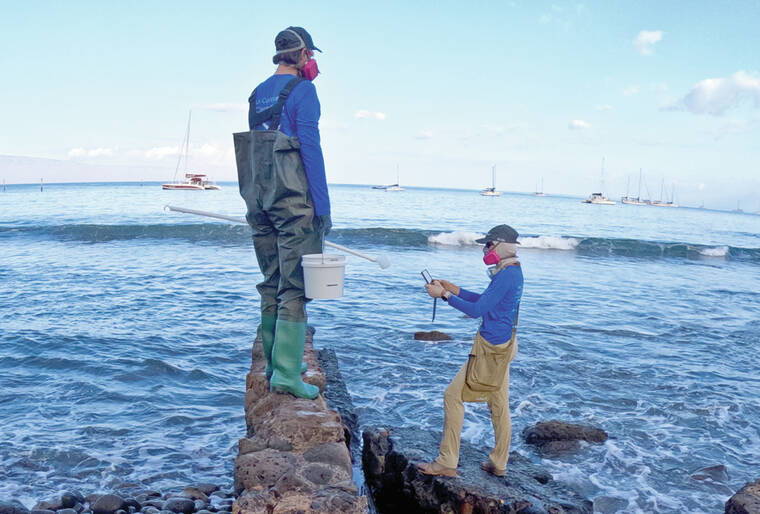LAHAINA, Hawai‘i — Water samples taken on Wednesday in the nearshore ocean off Lahaina found physical parameters, such as temperature, pH, salinity and dissolved oxygen were in normal ranges.
The testing was done by a group of three people at numerous locations along the fire impact area, the state Department of Land and Natural Resources (DLNR) said in an update on Wednesday.
Russell Sparks, an aquatic biologist with the DLNR’s Division of Aquatic Resources who participated in the testing, said the samples would be looked at in more detail.
“We have annoying concerns that pollutants from the fire will make their way into the ocean at some of the drainage outfalls or from storm drains. For years we’ve done regular monitoring, but now we’re including testing from the fire zone,” Sparks said.
“We’ll be sending samples off to researchers who will be looking more in detail at some of the heavy metals and other volatile chemicals that are associated with fires.”
The process includes looking at volatile organic compounds and semi-volatile organic compounds (SVOC), said Liz Yannell of Hui O Ka Wai Ola, who also participated in the testing on Wednesday. Hui O Ka Wai Ola, which means “Association of the Living Waters,” refers to itself as a group of water quality champions.
“We have more of a chance of finding SVOC in the water because these compounds don’t disperse as quickly,” Yannell said. “Big things that end up in the ocean can leach chemicals into the marine environment.”
The third participant in the testing process, Tova Callender of the West Maui Ridge-to-Reef Initiative, said her organization and other testing partners have been working for 10 years to reduce erosion and sedimentation from the West Maui mountains into the ocean.
She said the focus has been on a drainage watershed north of Lahaina, which is out of the fire area.
“Certainly this gives up the opportunity to do a restart on all kinds of things,” Callender said.
“This includes the agriculture areas above Lahaina and other communities, as well as improving best practices for stormwater management from the ridges to the reefs of West Maui.”
Compounding the situation is the old infrastructure in Lahaina. That means the stormwater does not flow into settling basins or modern infrastructure, Sparks said, so it flows as quickly as it can into the ocean.
“So, that’s a huge concern with the amount of potentially toxic substances on the land now,” he said.
•••
Wyatt Haupt Jr., editor, can be reached at 808-245-0457 or whaupt@thegardenisland.com.


